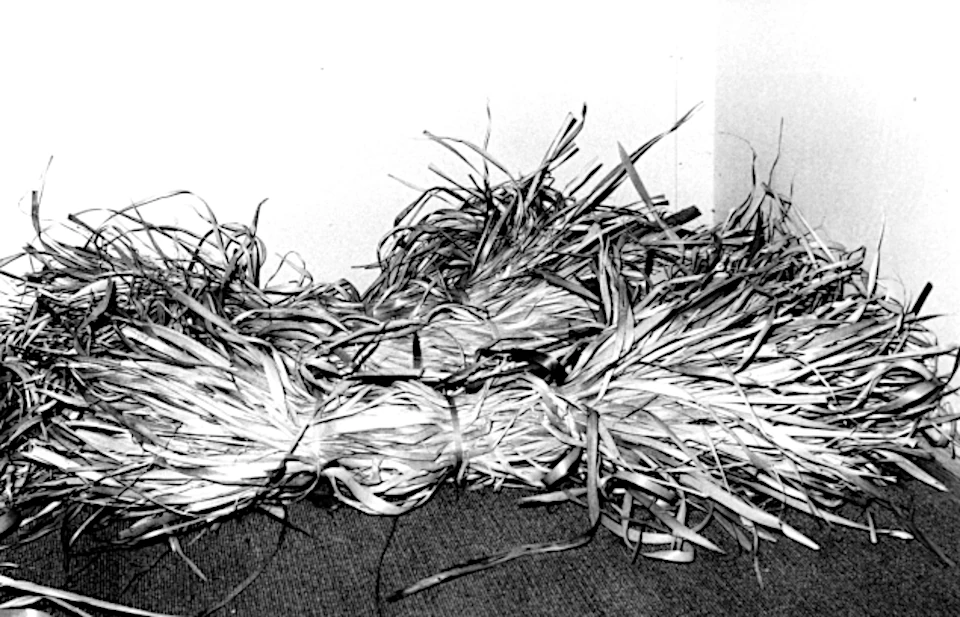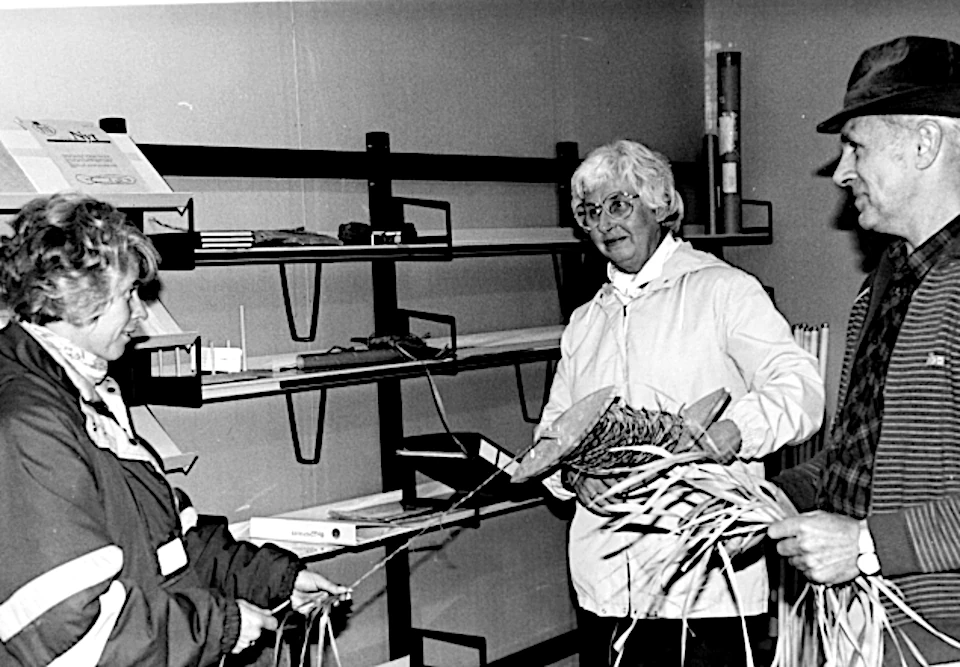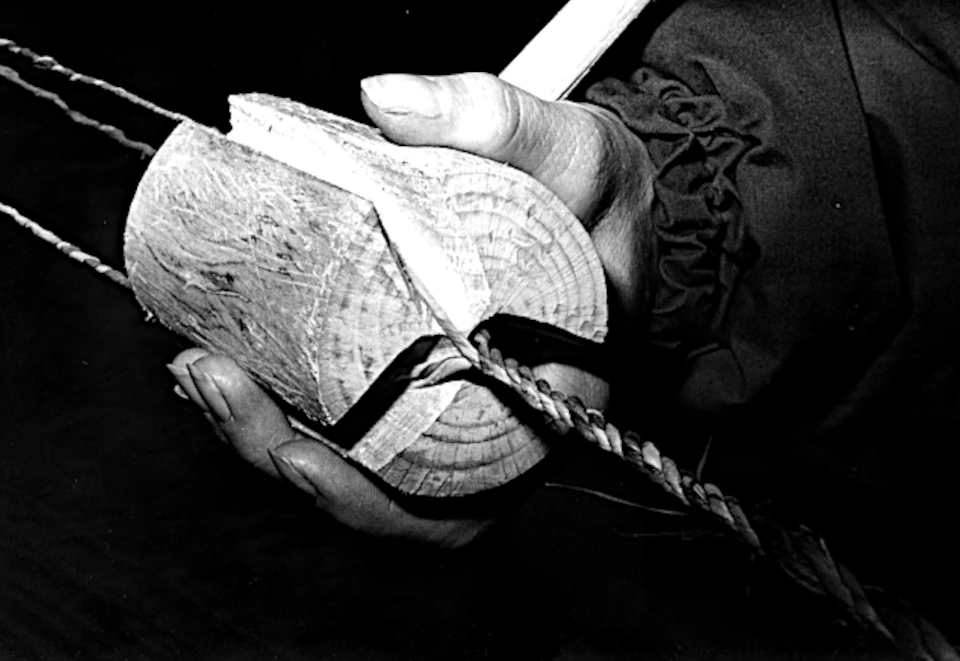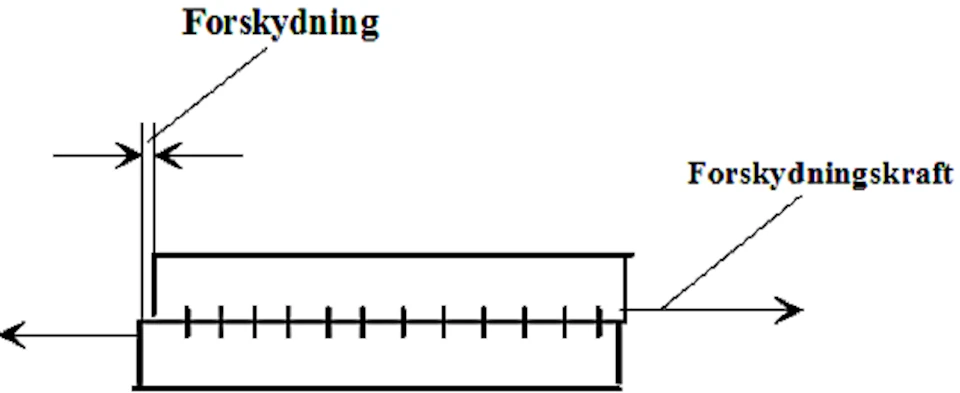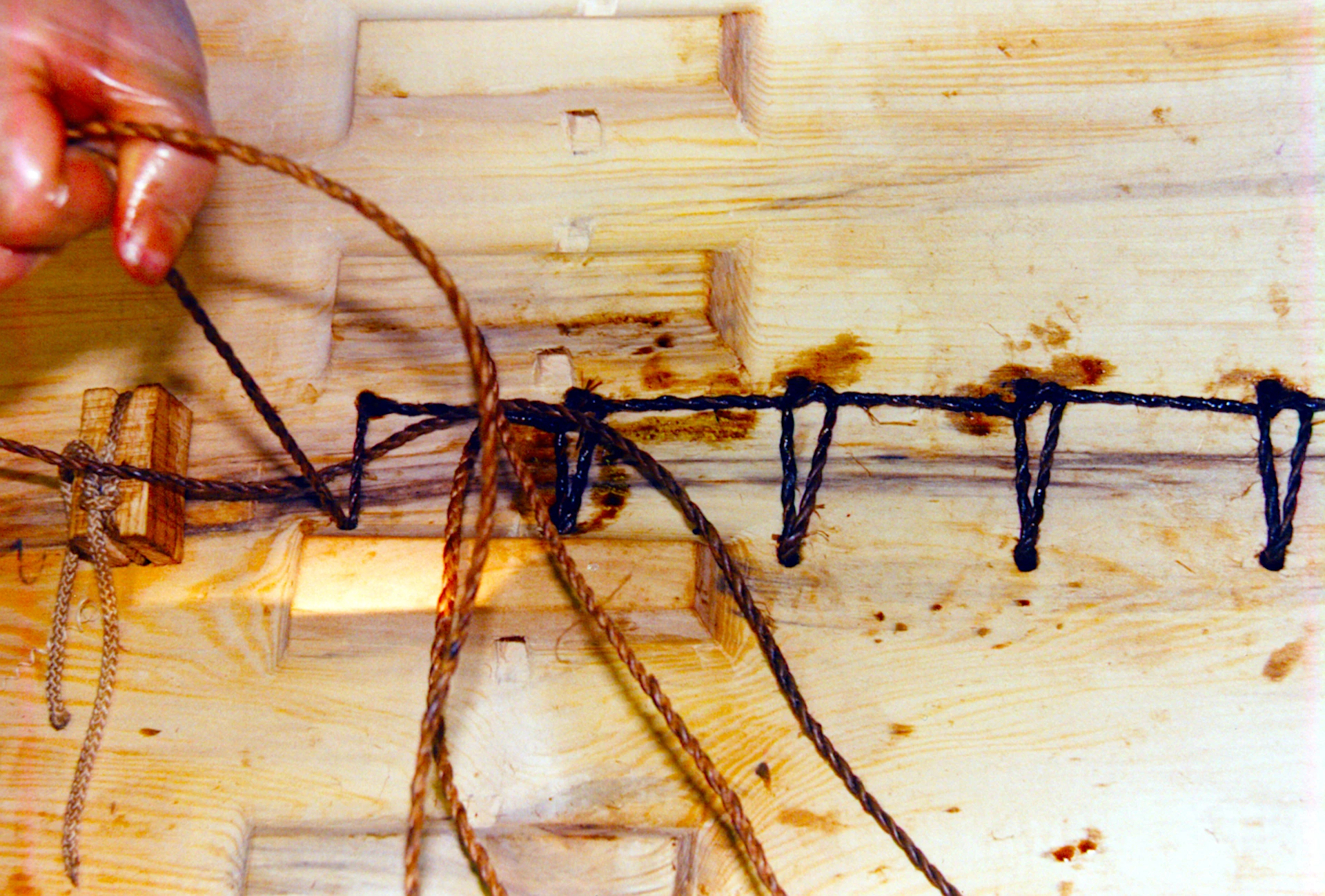Bast, cording and sewing
While the woodworking exercises were taking place, one group was studying the making of cords for sewing or lashing together the boat's parts. As previously mentioned, there was some uncertainty as to what material the sewing cords were made of. No traces of cord were found in the stitching, only impressions in the adhered sealing material. However, there was a bundle of cords at one end of the boat that had been interpreted as being made from lime bast. This material was already known to have been used for cordage production in the Stone Age.
However, some wooden parts were found in a couple of sewing holes that could be interpreted as cords made from birch roots, for example. However, they could also have come from wooden sticks that were driven into the sewing holes after sewing to ensure that the cords remained tight, as seen on Maori boats in New Zealand.
We had our doubts. We finally decided in favour of limewood, thinking that there should have been boats sewn together with cords of this material by now.
One member had a son who was a forester on Zealand. He had a plantation of young lime trees that needed thinning. The member travelled to Zealand one day in June, when the trees are easiest to debark due to the sap rising. The trees, which had a diameter of 10-12 cm, were felled and cut into lengths of 1.5 metres. The bark was scratched with longitudinal scratches at a distance of 15 mm and peeled off. The strips of bark were then soaked in water for a month in vats. This allowed the glue (pectin) between the individual bark layers to rot away and the thin strips of bark could be peeled off. These were washed and hung to dry and finally bundled into 10 cm diameter bundles. The bast harvest totalled 13 kg.
The bast strips were twisted into cords using a spinning reel that constantly rotated the finished cord piece.
As the twisting progressed, new bast strips were added. The number of bast strips simultaneously present somewhere on the cord determines how strong the cord will be.
The finished cords were then twisted together to form cord. This was done using a so-called shearing machine, a machine where three hooks rotated at the same speed and direction. The twisting of the cords into string was controlled by a top.
The method used is no different from ordinary rope weaving. A method of spinning cords and twisting rope using only hands and fingers was tried. This method, which had probably been used in ancient times, gave the same good results, but it was significantly slower.
The find indicates that two-strand cord was used to sew the boards together. For the lashings of the ribs or wraps for the boards' cleats, we chose to use three-strand cord, as such cord was found in a bundle in the find. A total of 600 metres of cord was used to sew the boards and for the lashings.
By moistening both the bast strips and the cords before tying, we achieved a much more beautiful and uniform result.
A series of measurements were taken with two-stranded cord with a density of 6.8 g/m. After normalisation, where the cord was stretched, we found the following values:
Shrinkage: from dry to wet: 1%.
Coefficient of elasticity: 0.005 %/N.
Breaking strength: 250-300 N (25-30 kg).
We found that the breaking strength was on the lower side, which is why we increased the number of bast strips in the cords from 2-3 to 3-4. This increased the density of the two-stranded cords to 11 g/m, corresponding to a breaking strength of 40-50 kg, and it was with this cord that the boat was sewn together.
Tests were also conducted on the strength of the sewing of the boards. Before we report on these tests, we need to look at the seal between the boards. According to Rosenberg, the find indicates that the seams on both the outside and inside were covered with an organic mass, which Rosenberg interpreted to be resin. Later research into the parts of the find revealed a lump of organic material that was analysed and found to contain animal fat and linseed oil.
After discussions with the National Museum in Roskilde, we decided that the seal between the boards should consist of rolls of carded sheep wool dipped in a mixture of beef tallow and linseed oil. Some tests were carried out with different mixing ratios, and we found that an 80/20 mixture of ox tallow/linseed oil gave the best results in terms of sealing. The density of the saturated sheep's wool roll was 20 g/m.
Two boards were now manufactured to represent tables. Over a length of 60 cm, these boards were sewn together with the sealing material in the gap between the boards.
The stitching of the test piece was subjected to shear forces and we measured coherent values of shear force and mutual movement. The figure shows this correlation. Up to a force of 0.6 N/mm seam length, the pieces did not move relative to each other.
0.6 N/mm corresponds to 36 kg force over the entire length or 60 kg force per metre of seam.
At higher forces, we got a shear, but it was slow and hesitant, suggesting that the seal acts as a very viscous fluid. This displacement was permanent, i.e. it did not disappear when the force was removed.
A stitch was sewn every 7.5 cm. Consistent with the finding, the stitch was double with a course that caused the knot to be self-locking, so that cutting a string would not cause the entire seam to unravel.




